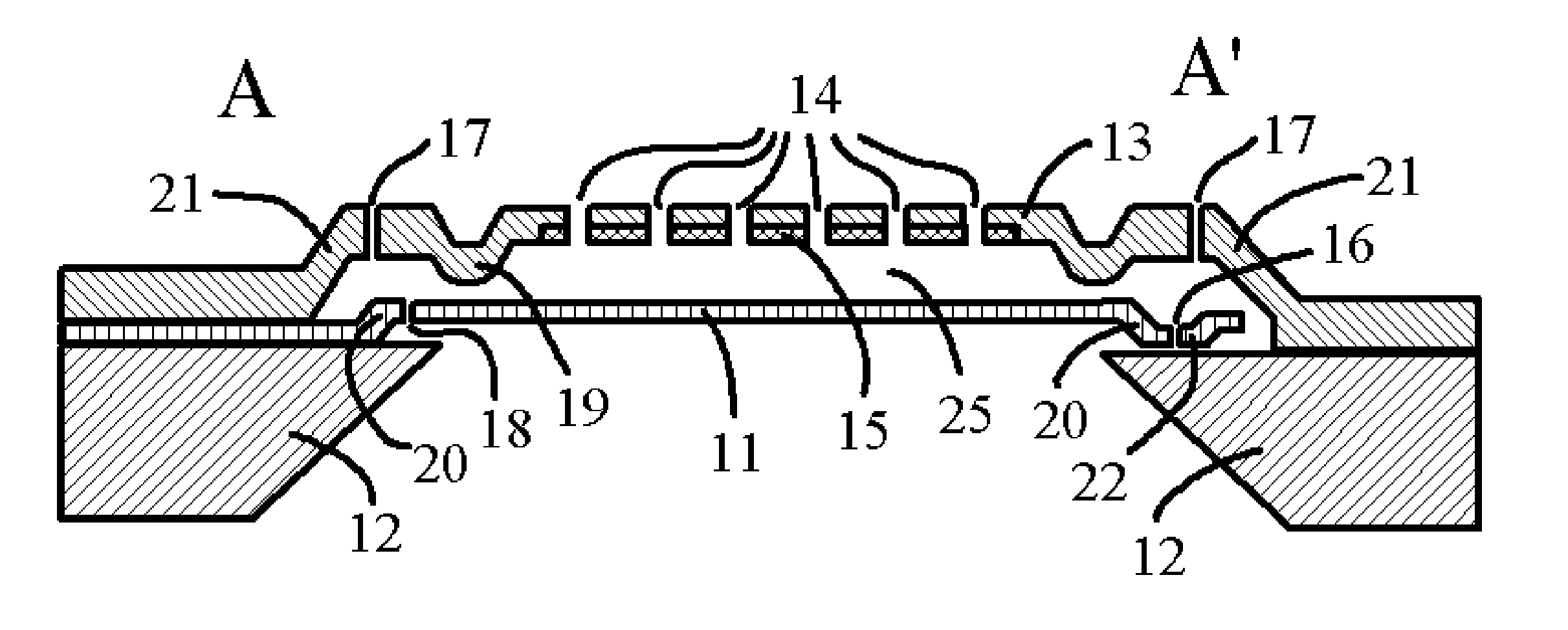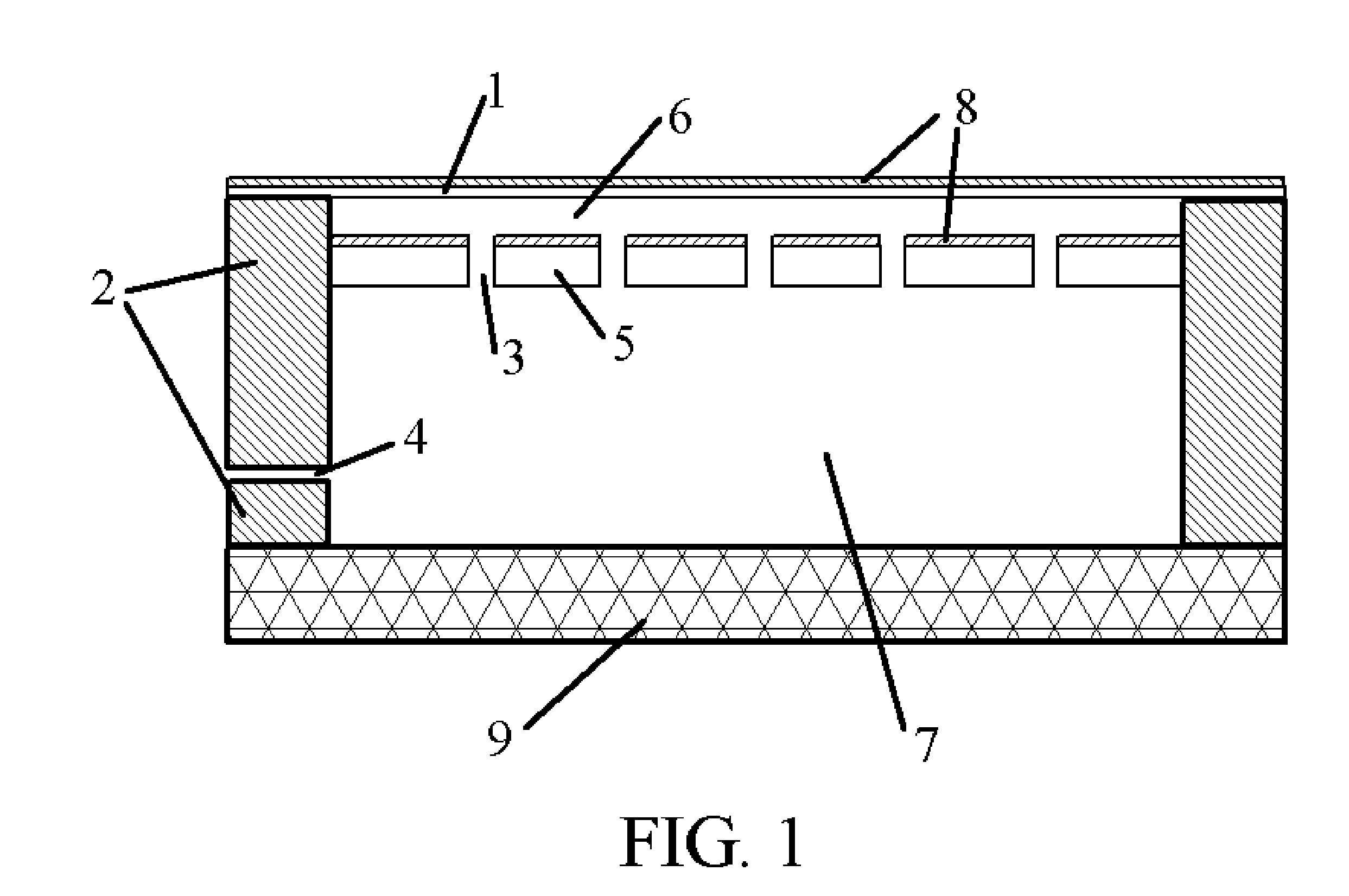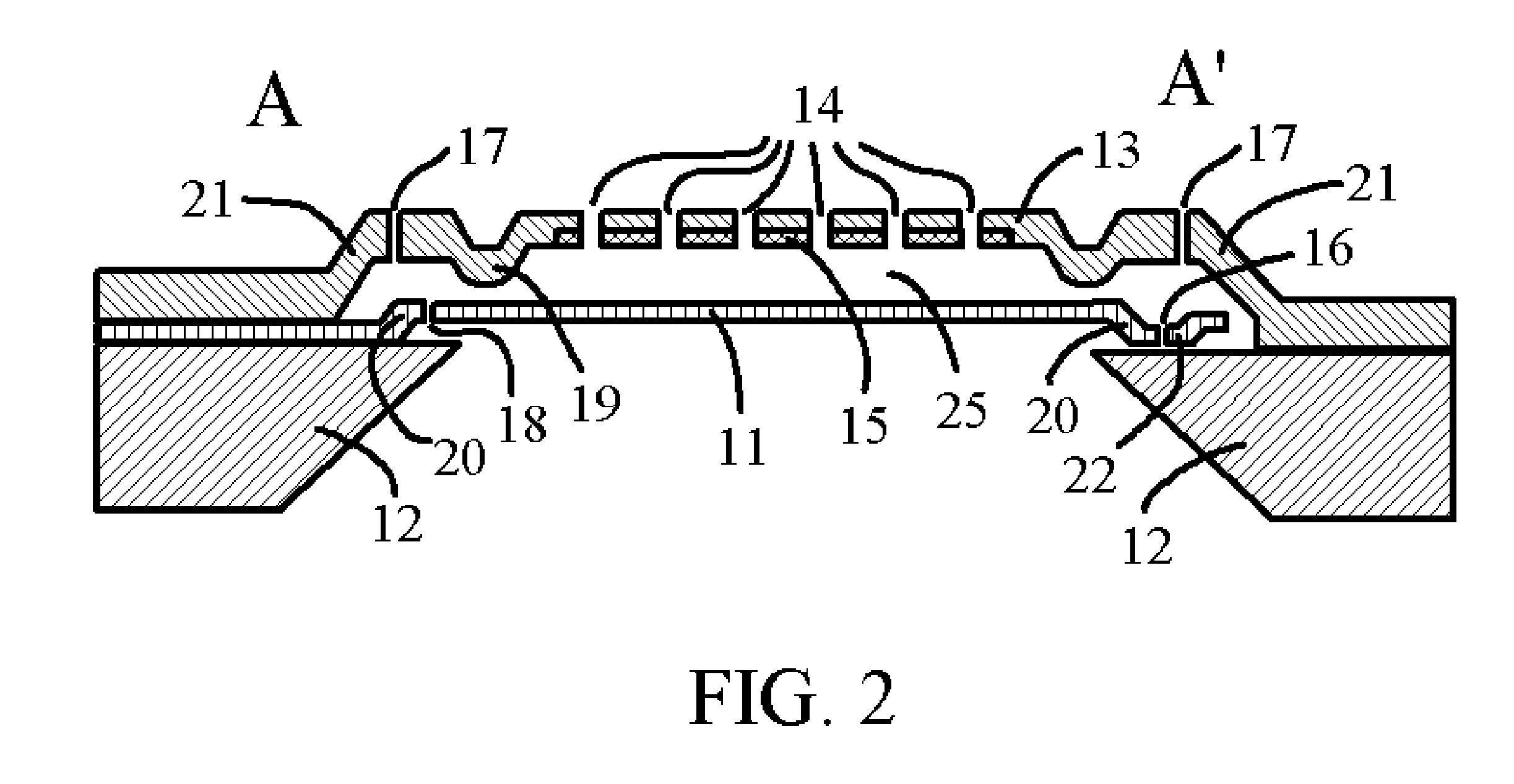Capacitive micromachined acoustic transducer
- Summary
- Abstract
- Description
- Claims
- Application Information
AI Technical Summary
Benefits of technology
Problems solved by technology
Method used
Image
Examples
Embodiment Construction
[0021] We approach the problem of making a good and practical micromachined acoustic transducer from a different perspective. Our stress releasing technique is to form corrugations in the membrane. The corrugated membrane is capable of releasing the built-in stress during the processing, thereby increasing the mechanical sensitivity of the membrane and reducing the irreproducibility. Compared with the conventional flat diaphragm, the shallowly corrugated membrane has an increased sensitivity, especially for a high residual stress level.
[0022] Referring now to FIG. 2, this is a cross-sectional view of a micromachined acoustic transducer along the line A-A′ in FIG. 4 according to the preferred embodiment of the present invention. A shallowly corrugated membrane 11 is anchored at one end on the substrate 12, and loose at the other end. The built-in stress in the membrane 11 is released through corrugation 20 on the membrane 11. The built-in stress in membrane 11 is further release thr...
PUM
 Login to View More
Login to View More Abstract
Description
Claims
Application Information
 Login to View More
Login to View More - R&D
- Intellectual Property
- Life Sciences
- Materials
- Tech Scout
- Unparalleled Data Quality
- Higher Quality Content
- 60% Fewer Hallucinations
Browse by: Latest US Patents, China's latest patents, Technical Efficacy Thesaurus, Application Domain, Technology Topic, Popular Technical Reports.
© 2025 PatSnap. All rights reserved.Legal|Privacy policy|Modern Slavery Act Transparency Statement|Sitemap|About US| Contact US: help@patsnap.com



